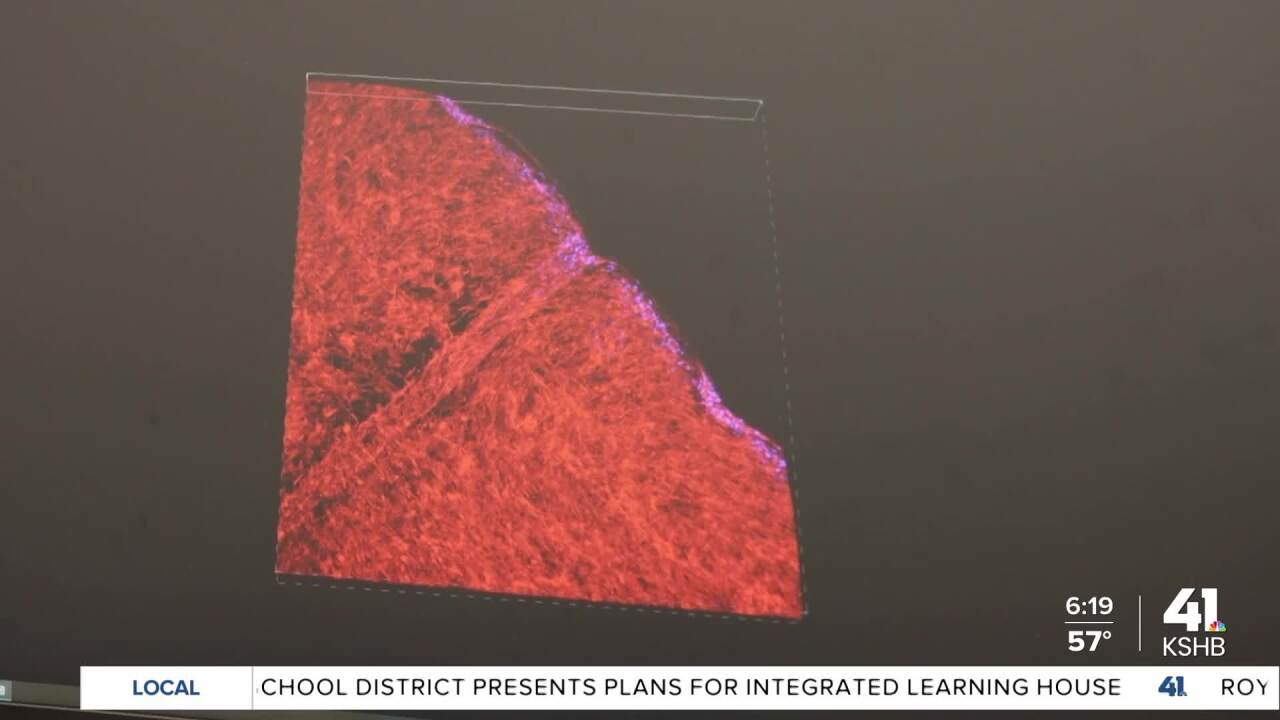KANSAS CITY, Mo. — Tucked away in an Overland Park office complex, a lab is bridging the gap between now and the future one cell at a time.
"We're still pushing the boundary," said Heather Decker, chief tech officer and co-founder of the company, Ronawk.

Ronawk will be sending its creation, bio-blocks, into space on a mission to the International Space Station.
The bio-blocks are a small, gelatinous puzzle piece-like structure on which micro activity could change science on a macro scale.
"What we have right here, these are our bio-blocks," said Dr. AJ Mellott, the chief executive officer and co-founder of Ronawk.

Dr. Mellott held up a small, liquid-filled clear pouch with a bio-block inside.
"These are hydrogel scaffolds," Dr. Mellott said. "So most people are familiar with hydrogels if they wear soft contact lenses. That's the most popular hydrogel today. And basically, we use these to grow cells."
Scientists grow cell cultures frequently to use them for crucial experiments.
You can see which cancer drugs are more effective on human cells or test tissue repair and growth in different conditions.
Growing the cells is a problem Decker and Dr. Mellott hoped to solve.
"For basically, like almost 80 years, we've only been growing cells in one way," Decker said.
That one way is only two dimensions on flat, hard, glass or plastic petri dishes.
“Cells don’t really like it and it actually causes some very drastic, different cell behavior than they would because they’re actually being introduced to forces that they would never have experienced," Decker said.
Dr. Mellot explained how the bio-block's three-dimensional structure and malleability makes them a more ideal surface for growth.

"But, in our bodies, that's not how cells grow," he said, drawing a comparison to petri dishes.
"In fact, it's more like a city block," Dr. Mellott said. "You've got people that are on multiple stories, they can wave down to each other, they're communicating from all directions ... In this block, the cells actually get to crawl through, migrate. There’s all these channels that permeate the block.”
The company's two founders say cells behave more naturally on the bio-blocks. Cultures grow faster and with more vigor, even bridging relatively huge gaps on the blocks.
Other scientists took notice. It's such an effective platform for growth researchers with Micro-gRx and the University of Florida will be using them on an upcoming experiment on the International Space Station.
“Our approach is to grow three-dimensional tissue or “organoids” from heart and skin stem cells in Ronawk’s functionalized bio-blocks that mimic the cells' natural environment,” says Dr. Maddalena Parafati, a research assistant professor in the Department of Pharmacodynamics at the University of Florida.
It's exactly the sort of use Decker and Mellott founded the company for; to help other scientists, researchers, even astronauts experiment faster and more efficiently.
"Gives them a really easy format while they're in space to basically do experiments that they would otherwise do here on the ground," Dr. Mellott said. "Each collaborator wants to do something different. Someone wants to work on the heart, someone wants to work on the kidneys, we get to help all of them and accelerate what they're doing and we can even bridge research between researchers."
The flight to the International Space Station is estimated to happen sometime in 2025 or 2026.





